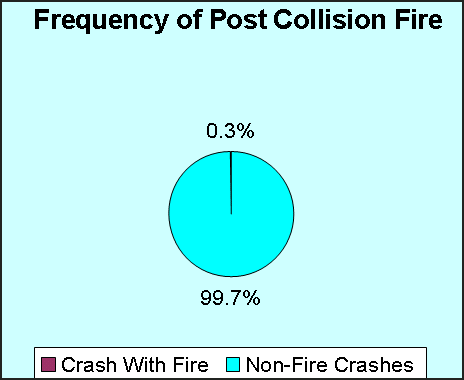|
|
Collision Fires: Introduction and Purpose
Collision fire events, though relatively infrequent when compared with
non-collision fires, are of significant importance because of their high injury
potential. A collision carries the risk of incapacitation and entrapment that
has grave consequences both physically and emotionally should a fire erupt,
hence they continue to receive a great deal of attention from investigators,
vehicle designers, lawyers, insurance companies, and the general public.
Previous sections of this course presented fundamental principles of vehicle
fire investigation; in this section, considerations specific to collision fires
will be covered.
 Incidence of post-collision fires shows that they are relatively rare events [1]
Incidence of post-collision fires shows that they are relatively rare events [1] |
 Fatal crashes with fire represent 3% of all fatal collisions; demonstrating a disproportionately high injury rate due to either the high-energy collisions that lead to both fatality and fire or fire as a cause of fatality. |
Because of the complexity of collision fire events, it is difficult to relate the results of laboratory and statistical studies to actual field incidents. Motor vehicle accident databases, though very helpful for general statistics, lack the necessary detail to understand the specific causes of fire, fuels involved, fire propagation factors, and injury mechanisms. For greater detail, in-depth field studies of individual incidents have been performed that provide insight into some of these issues [2, 3].
References